Louisiana Crunch Cake
If you’ve never tried Louisiana Crunch Cake, it just might become your new favorite dessert. Yellow butter cake is baked with a crunchy sugar coating and topped with a creamy vanilla glaze and toasted coconut.
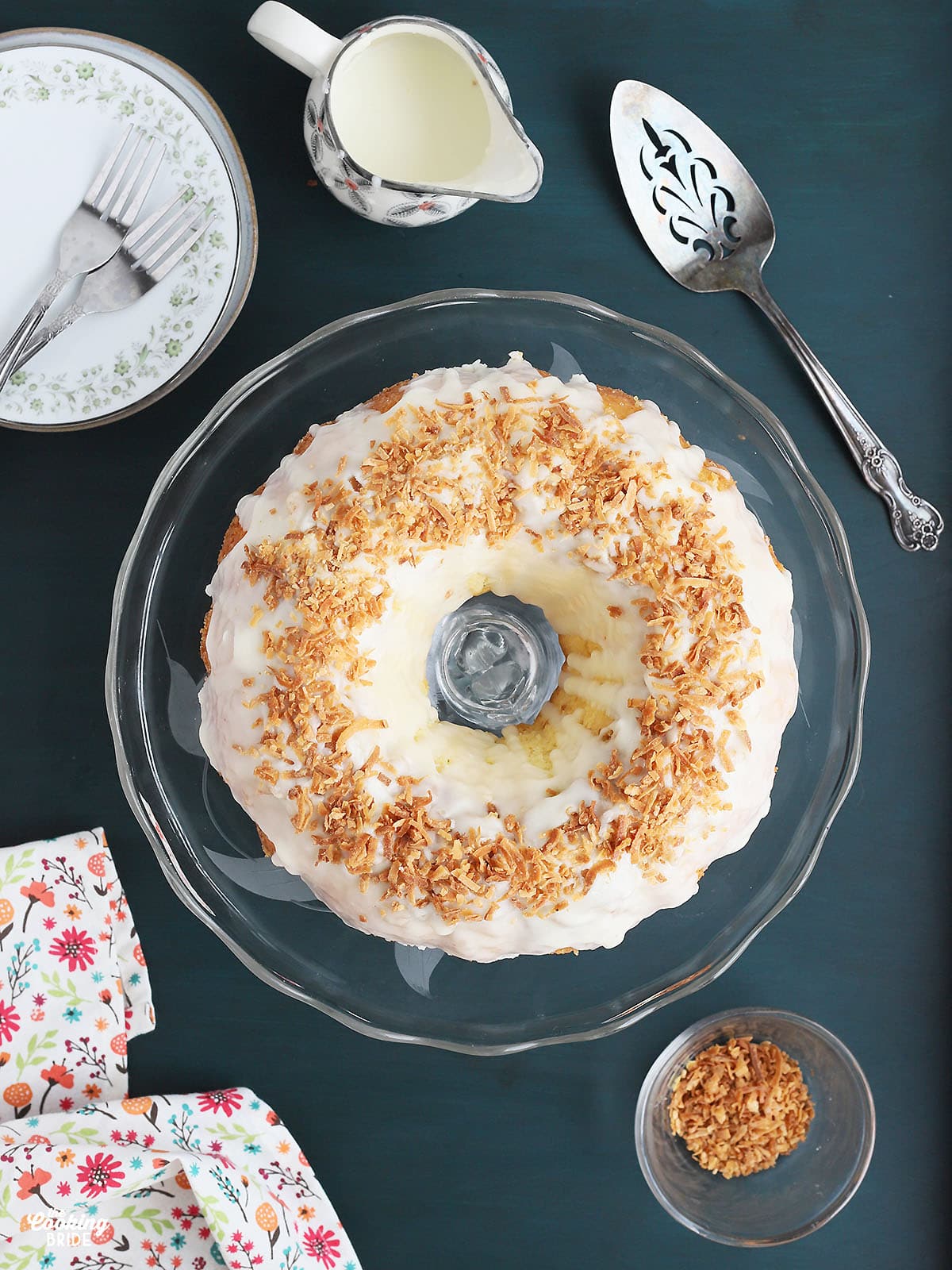
This post may contain affiliate links. Click here to learn more about how affiliate links are used on this site.
Y’all, I have searched high and low for some kind of history behind this cake and why it’s named for Louisiana. I am left with more questions than answers. If you ask most people down here if they have ever heard of a Louisiana crunch cake, they will refer to the packaged cakes Entenmann’s® sells in local grocery stores. That still leaves me scratching my head, since Entenmann’s® started in New York City and is currently headquartered out of Pennsylvania, nowhere close to Louisiana.
After reviewing several dozen different recipes, I can say with confidence that the name crunch cake came about because the cake is topped with something crunchy, though recipes vary from nuts to coconut. However, a few older recipes coat the cake pan with sugar before adding the cake batter, giving the end result a crunchy sugary glaze. I have a feeling this method was tradition way back when and maybe got lost somewhere along the way. When developing my recipe, I decided to bring that method back. The result is a tender, buttery yellow cake topped with a creamy vanilla glaze that gets its crunch from both a crunchy coating of raw sugar and toasted coconut.
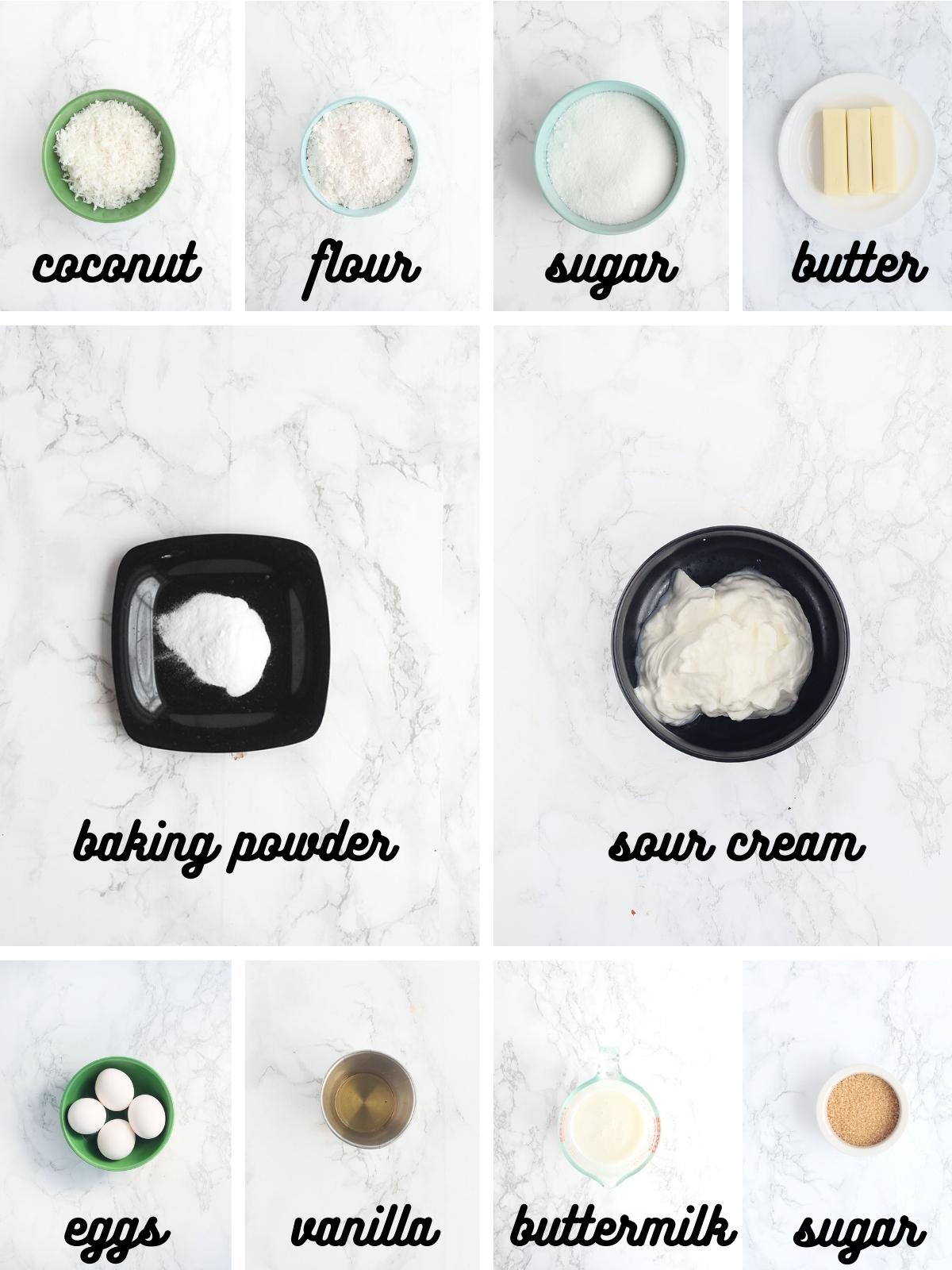
Toast the Coconut
You can toast coconut either in a skillet on the stove or in the oven. I prefer the oven method because you get more even browning, as long as you keep an eye on it. Start by preheating the oven to 350°F. Spread ½ cup of sweetened flaked coconut in an even layer on a baking sheet. Bake the coconut for 8-10 minutes, stirring every two minutes, until the coconut is a golden-brown color. Remove the coconut from the oven and set aside to cool. This step can be completed up to a few days ahead of time, but do store the toasted coconut in a plastic freezer bag or airtight container at room temperature. It should keep for a couple of days without getting stale or drying out.
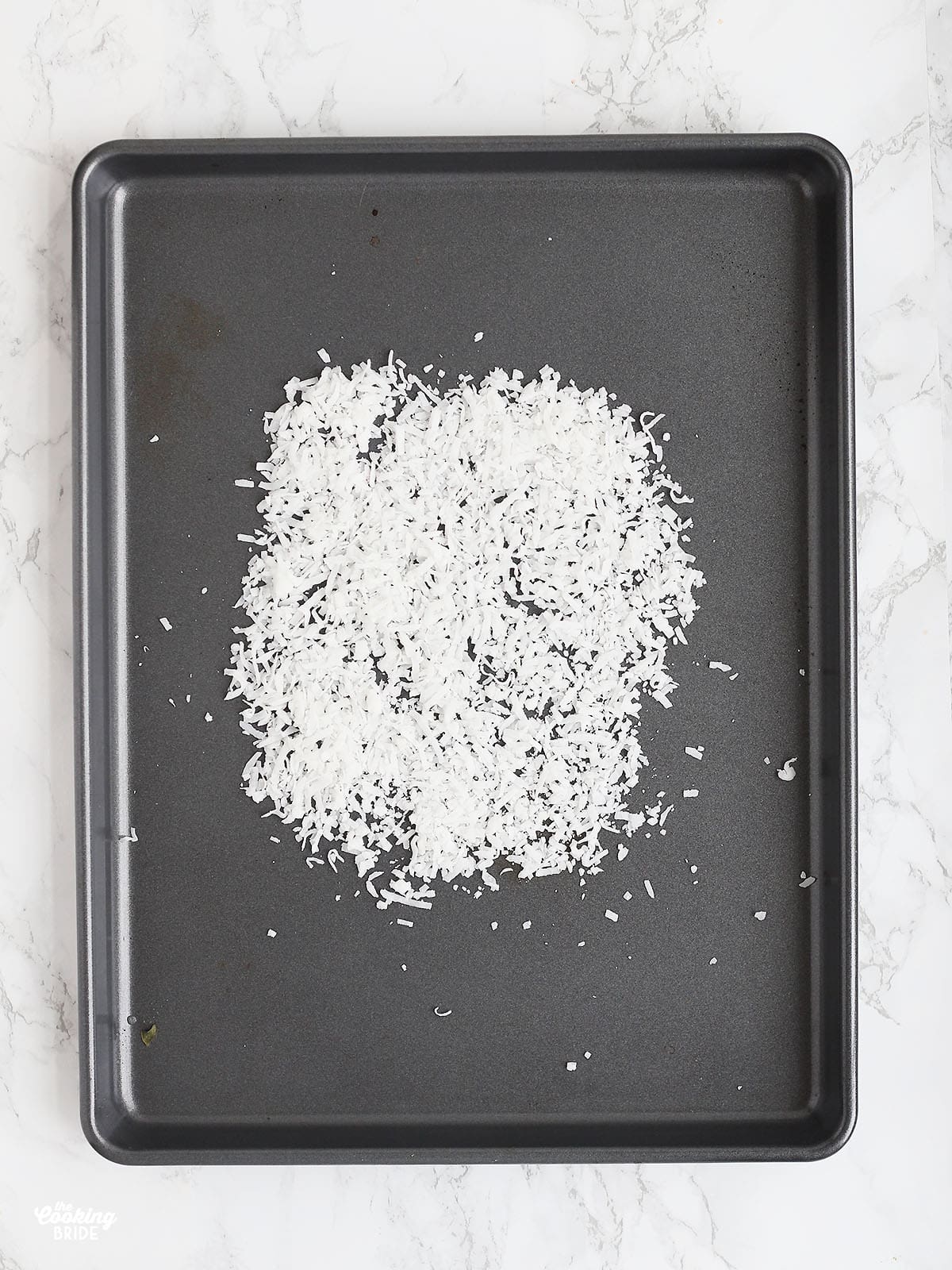
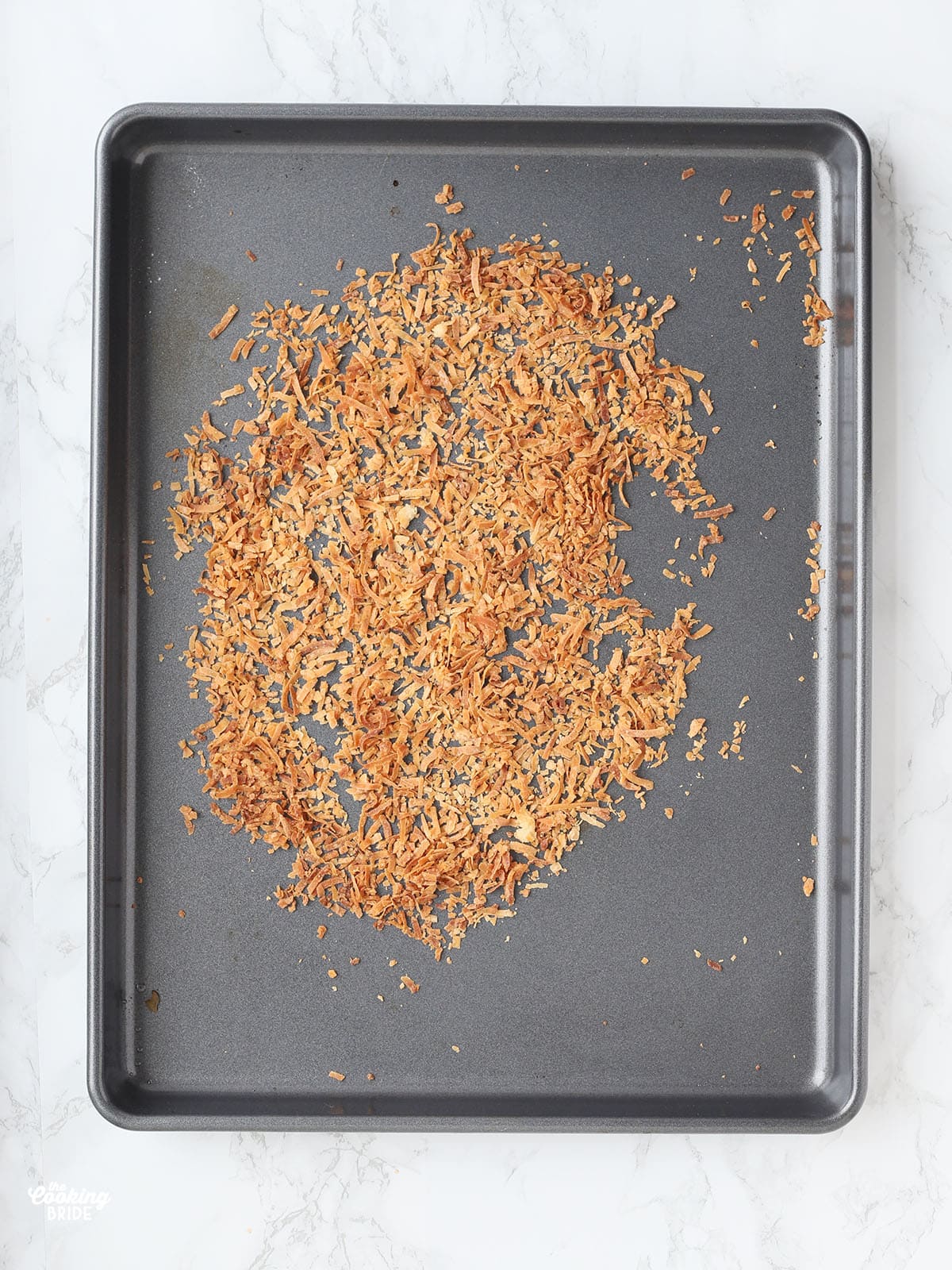
Prepare the Cake Batter
After you’ve toasted your coconut, reduce the oven temperature to 325°F. In a medium mixing bowl, sift together 3 cups of cake flour, 2 teaspoons of baking powder and one teaspoon of salt. In a separate bowl, beat 1 ½ cups of softened unsalted butter and two cups of granulated sugar until the mixture is light and fluffy.
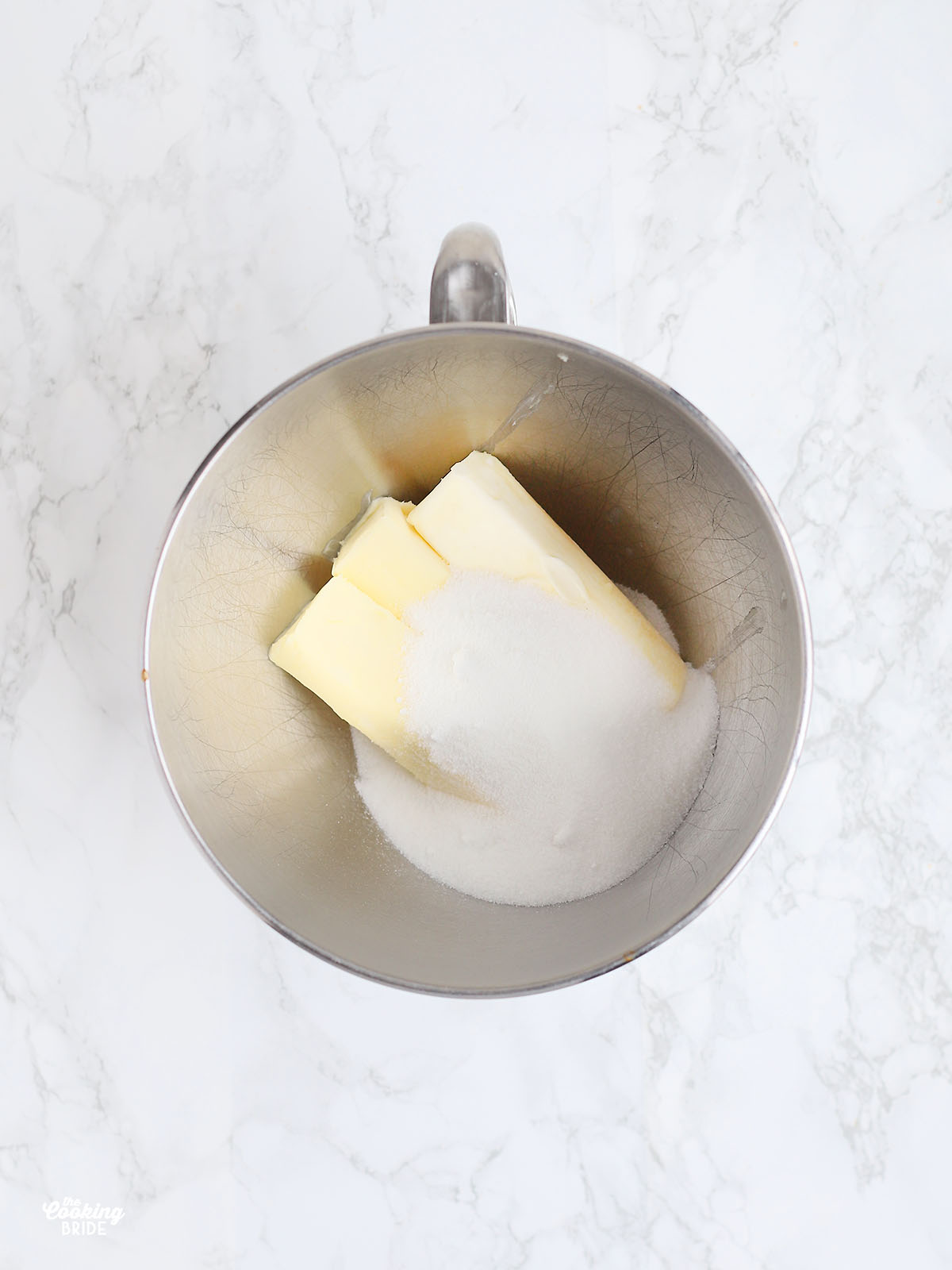
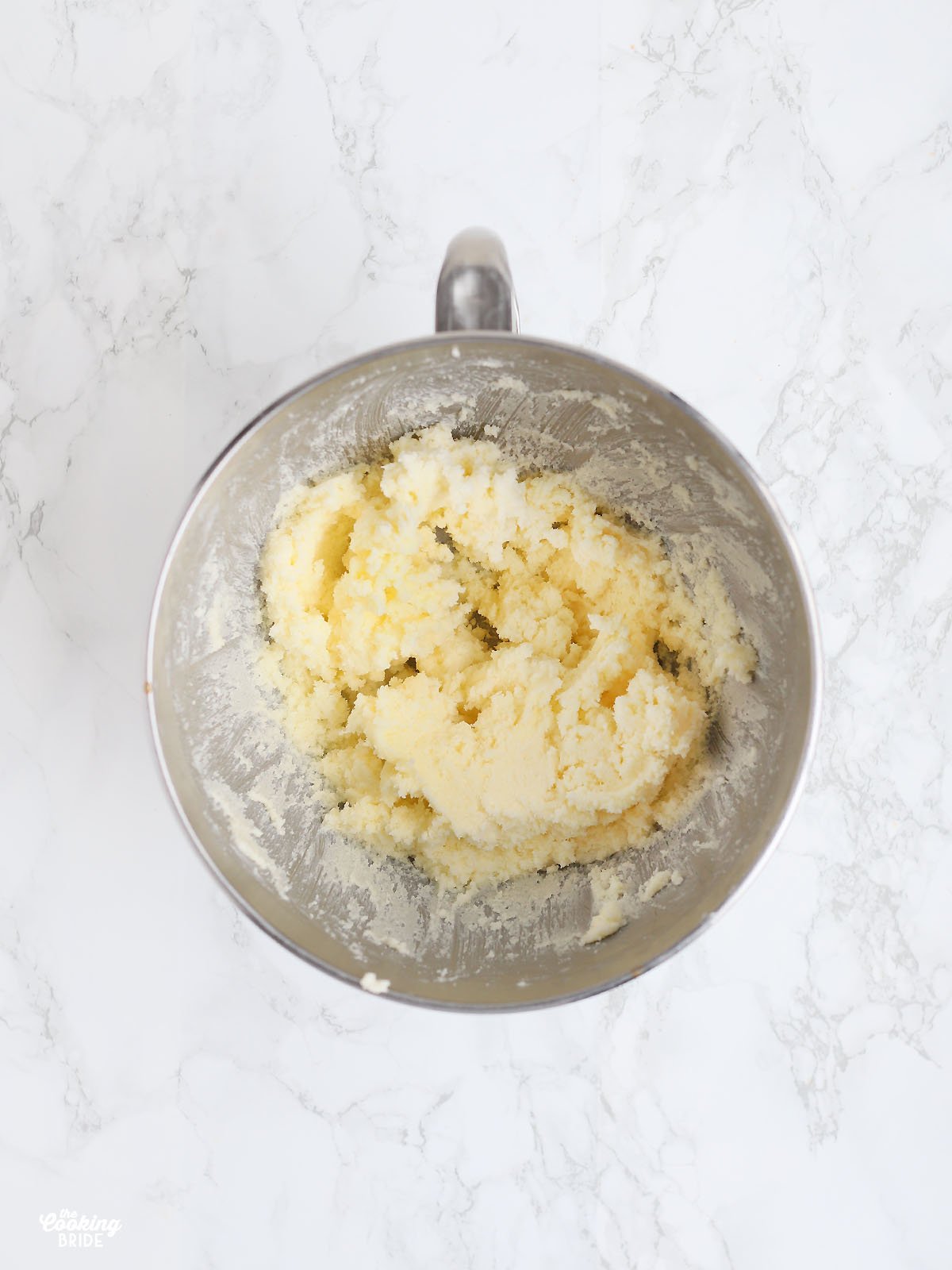
Add four whole eggs, one at a time. Beat the batter well after you add each egg. Then add ¼ cup of sour cream and 1 ½ teaspoons of vanilla extract. Beat again to combine. With the mixer on low, alternately add ⅓ of the flour mixture and ⅓ cup of buttermilk. Beat just until combined. Repeat this two more times, ending with ⅓ cup of buttermilk.

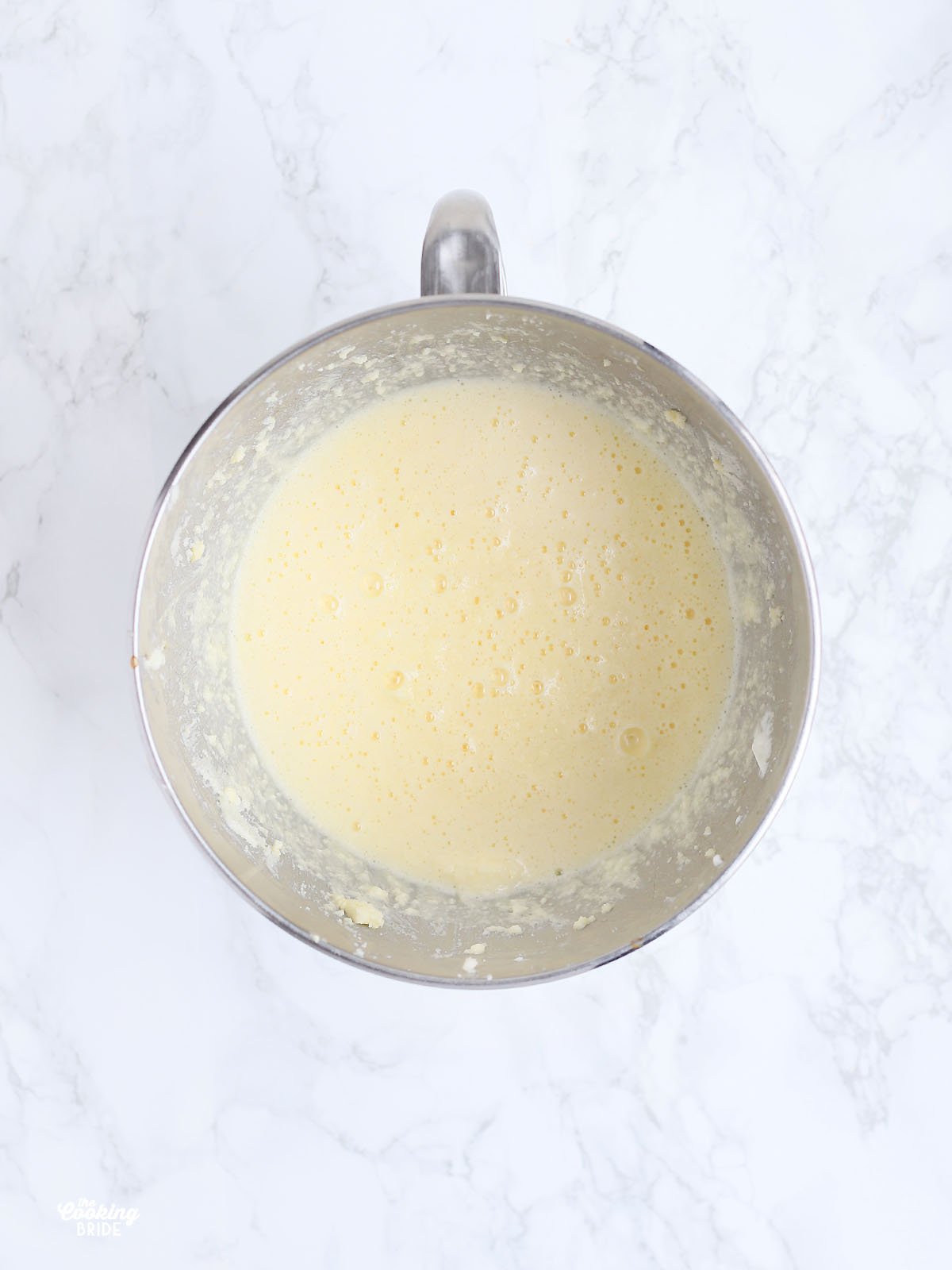
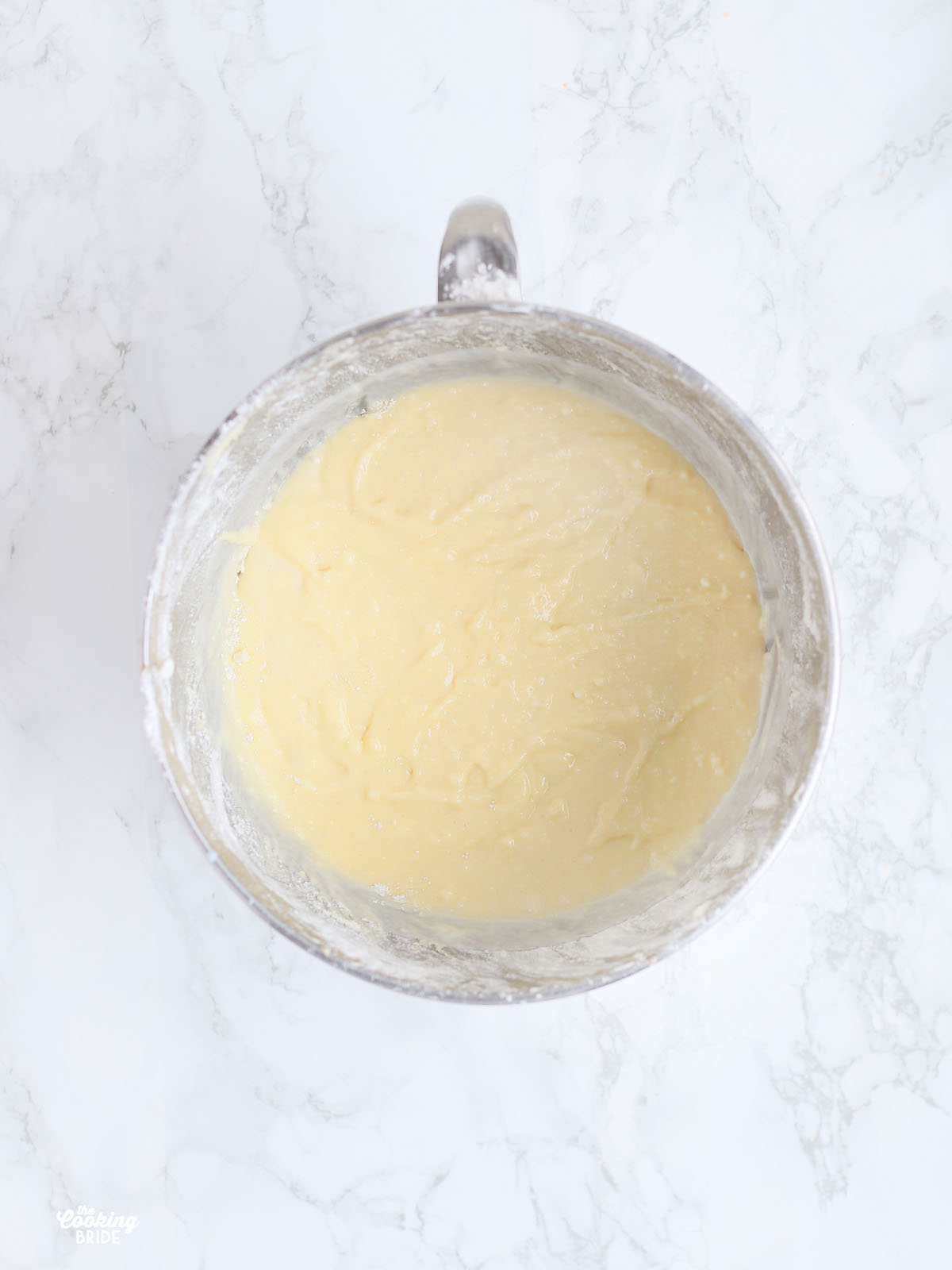
Prepare the cake pan
Raw sugar, also known as turbinado sugar or Sugar in the Raw, is simply sugar that has not been refined as much as white granulated sugar. It has a darker color and larger crystals. The large crystals don’t dissolve as quickly and are ideal for creating added crunch and texture. I like to sprinkle it over the top of baked goods such as muffins or my Buttermilk and Blueberry Breakfast Cake.
I used a 10-inch Bundt cake pan, but you can also use an angel food cake pan of the same size. Grease the bottom and sides of the pan really well. Sprinkle ¼ cup of raw sugar into the greased pan, then gently tilt the pan back and forth and side to side to get the sugar to stick to the bottom and the sides of the pan. After that, carefully arrange ½ cup of the toasted coconut in an even layer around the bottom of the pan.
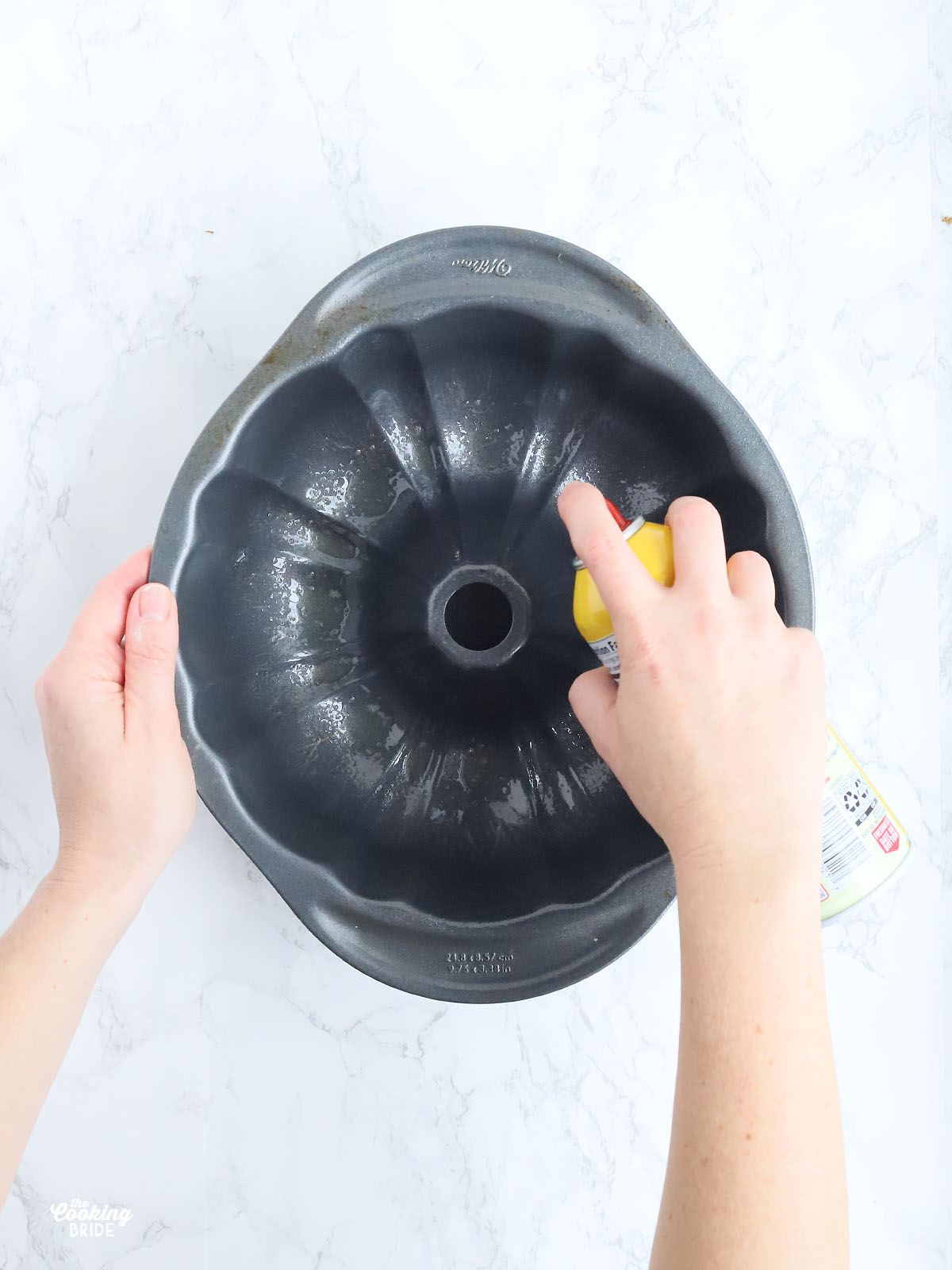
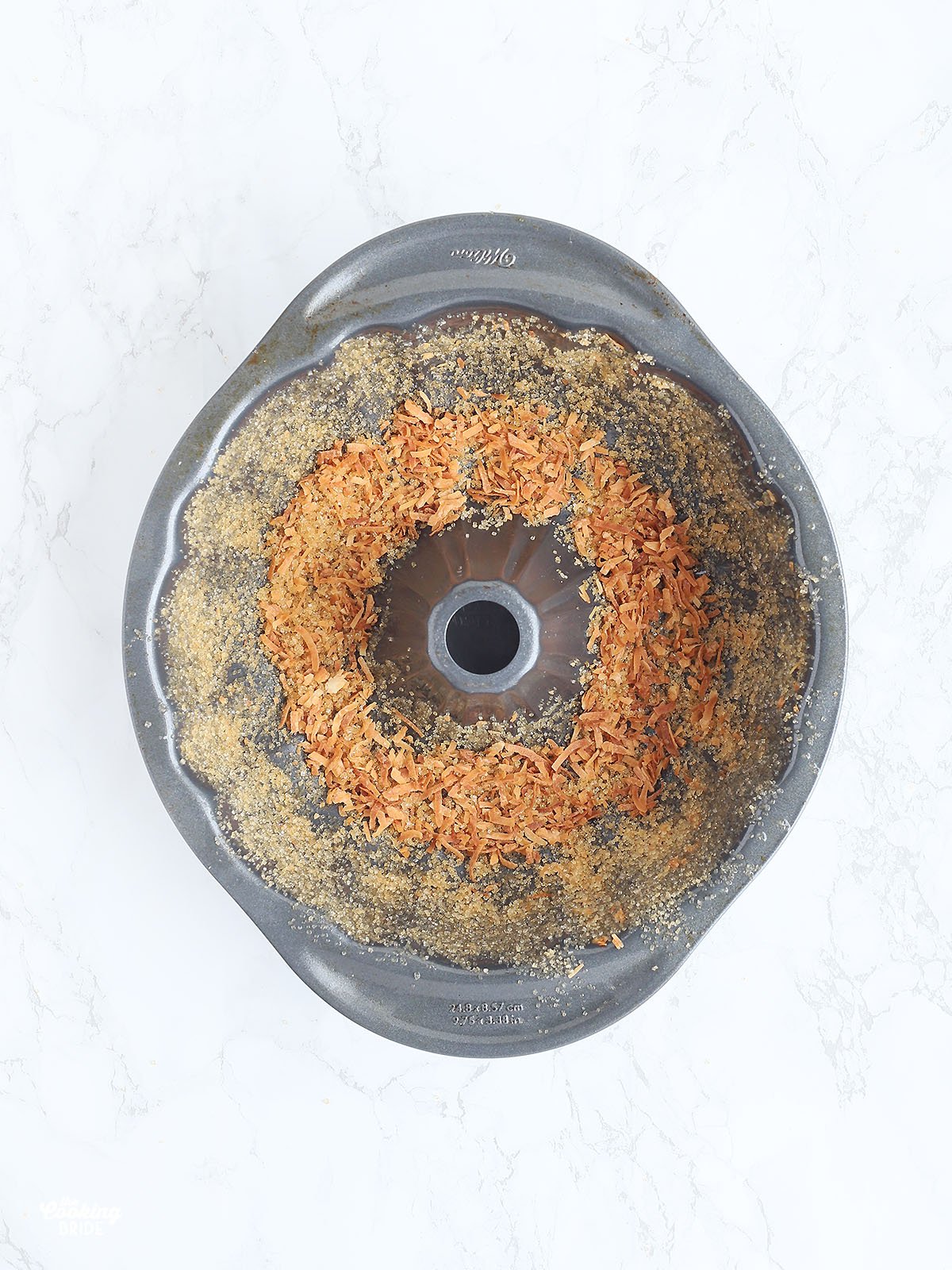
Carefully pour the cake batter over the sugar and coconut mixture. You want to do this carefully so that you don’t disturb the sugar stuck to the sides of the pan. Gently tap the cake pan on the counter to remove any air bubbles.
Bake the cake for 60-65 minutes or until a toothpick inserted in the center comes out clean. Remove the cake from the oven and allow the cake to cool in the pan for several hours. You want to give the sugar crust time to harden so it’s easier to remove from the pan.
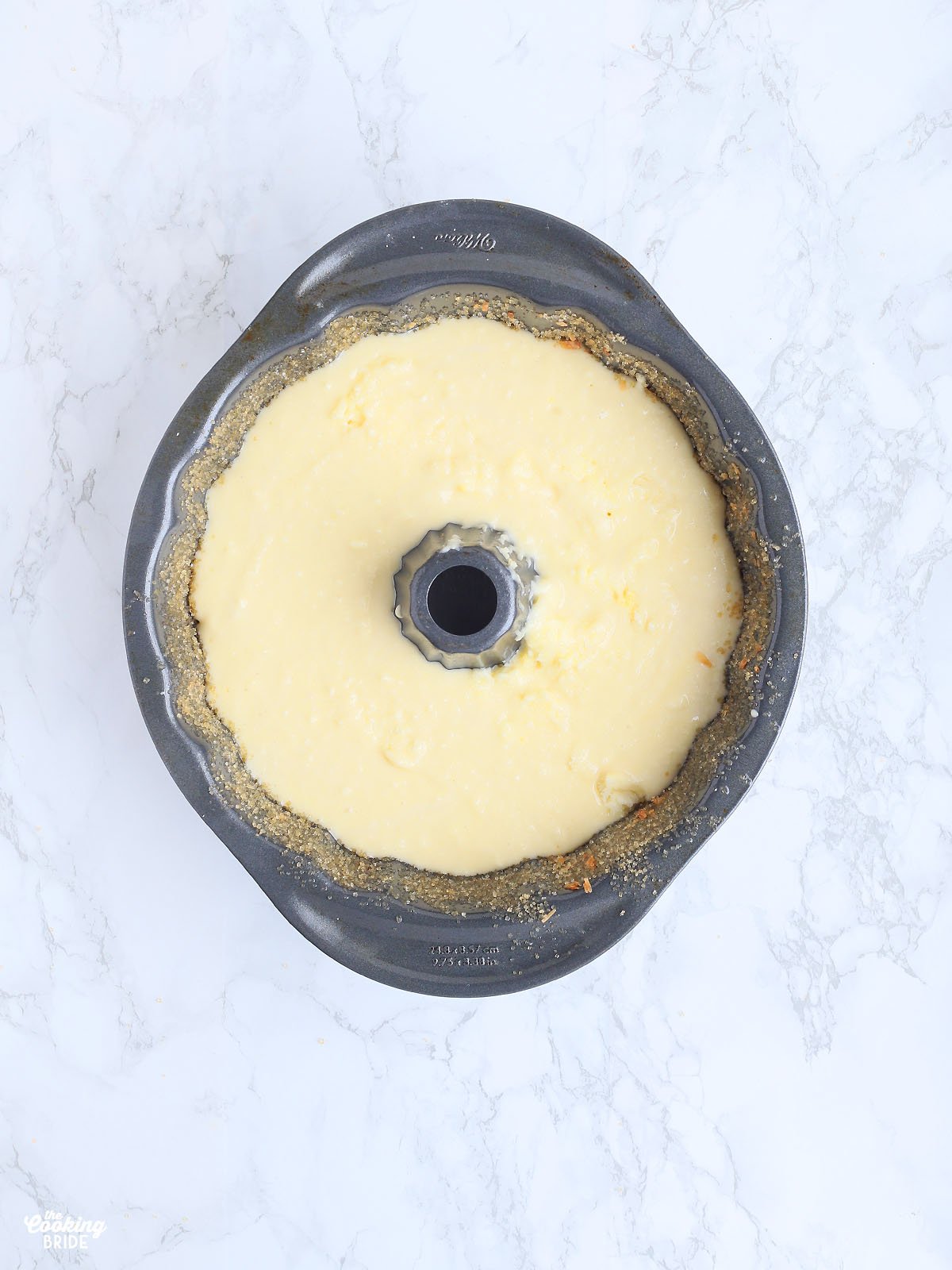
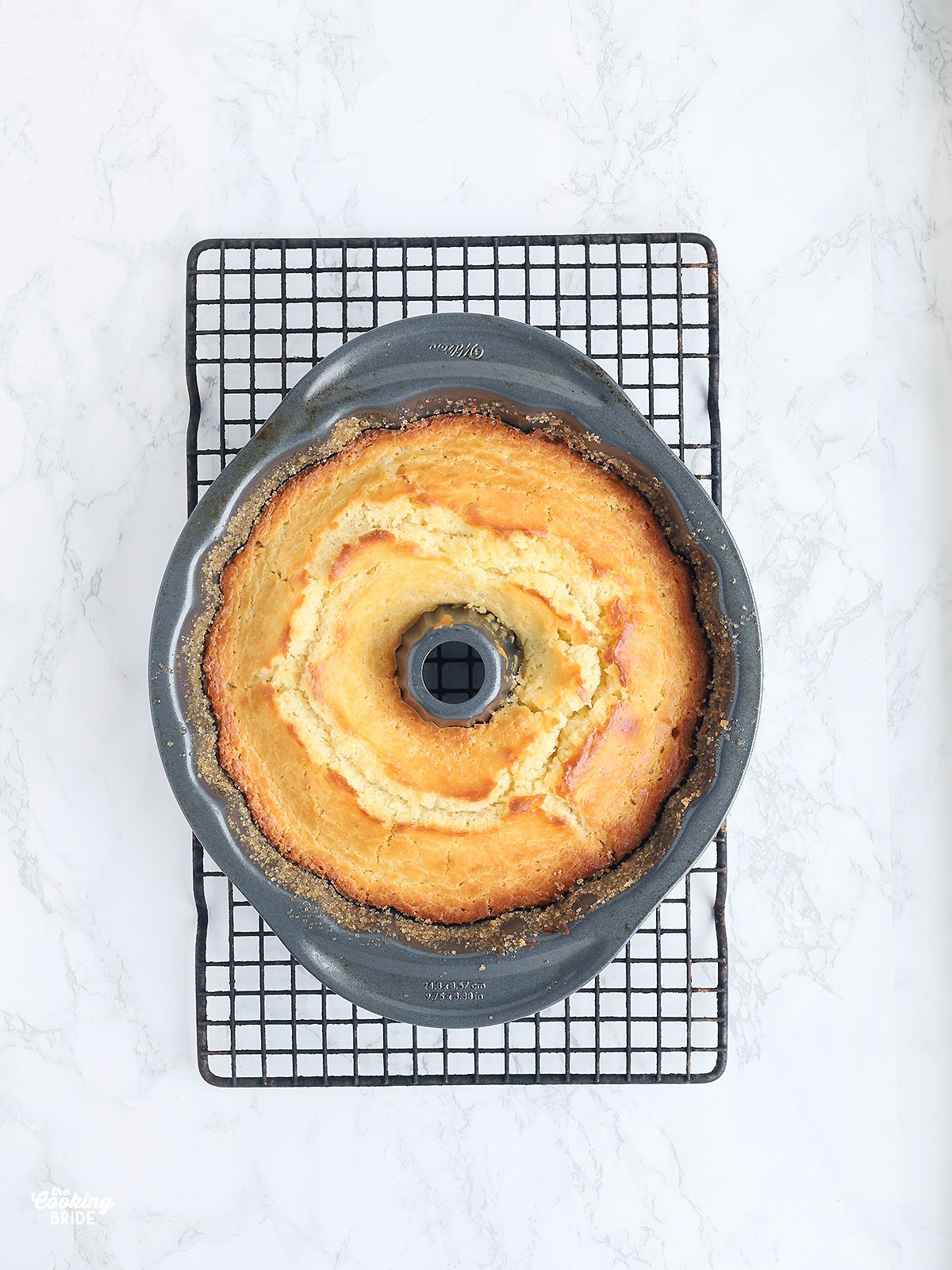
When it comes time to invert the cake, you can gently run a knife around the outside of the cake. Just be sure you’re not scraping off any sugar in the process. Place a plate over the cake pan and slowly turn it over. Leave it there for a few minutes. Eventually, the cake should drop.
If some of your sugar crust gets left behind in the cake pan, don’t fret. You’re covering the cake with glaze, remember? Simply scrape any sugar left behind out of the pan and gently press it back into the cake.
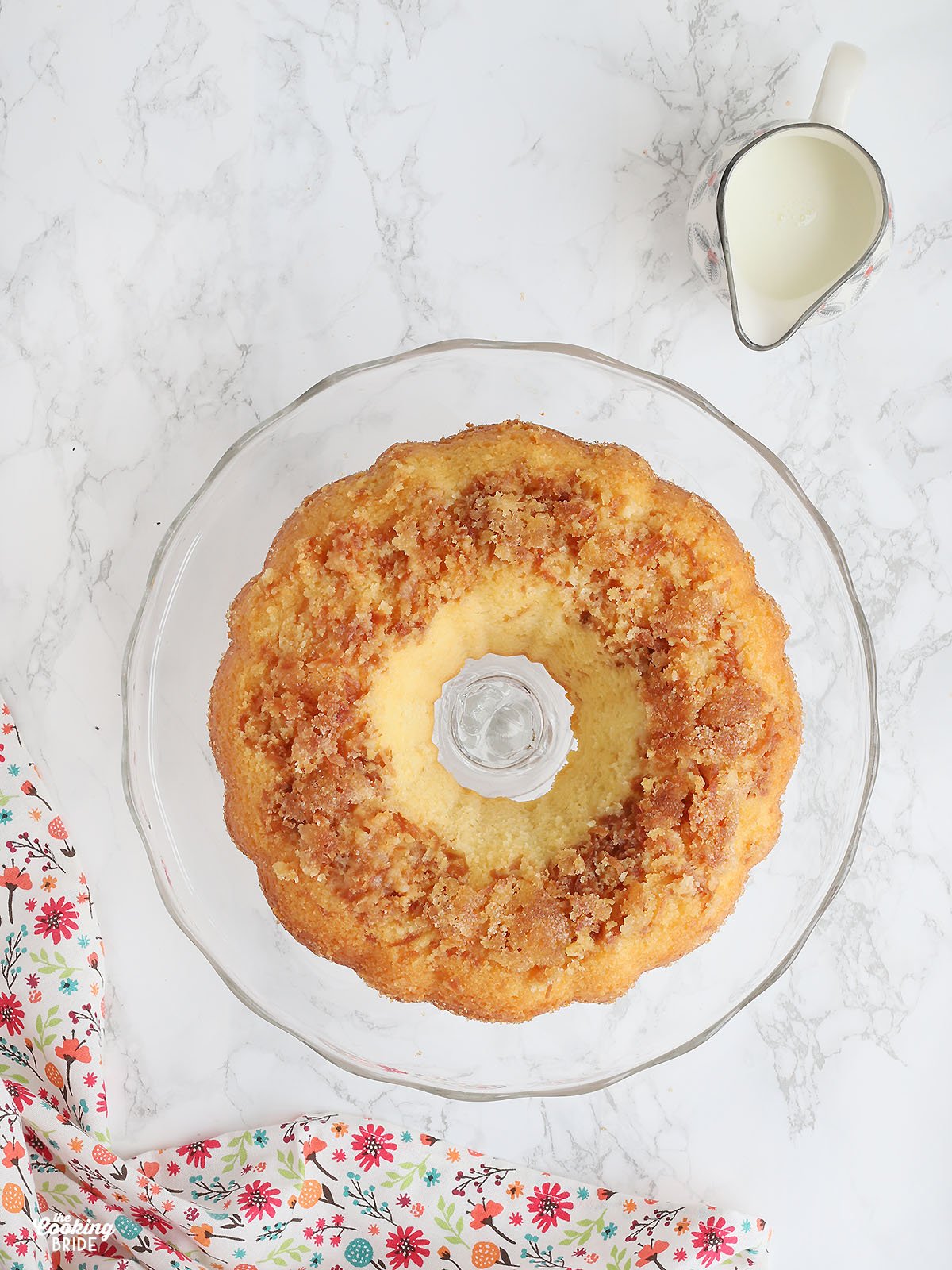
Make the glaze
To make the glaze, simply whisk together 1 ½ cups of powdered sugar, four tablespoons of melted butter, 3-4 tablespoons of milk and one teaspoon of vanilla extract. Whisk until the glaze is smooth and there are no lumps. Place the glaze in the microwave and heat it 30 seconds to one minute. This will make the glaze easier to pour. It will seem thin, but don’t worry. The glaze will harden once it cools.
Drizzle the glaze over the top of the cake, allowing it to drip down the sides. While the glaze is still wet, sprinkle the top of the cake with the remaining ½ cup of the toasted coconut. Allow the glaze to harden for 30 minutes before serving.
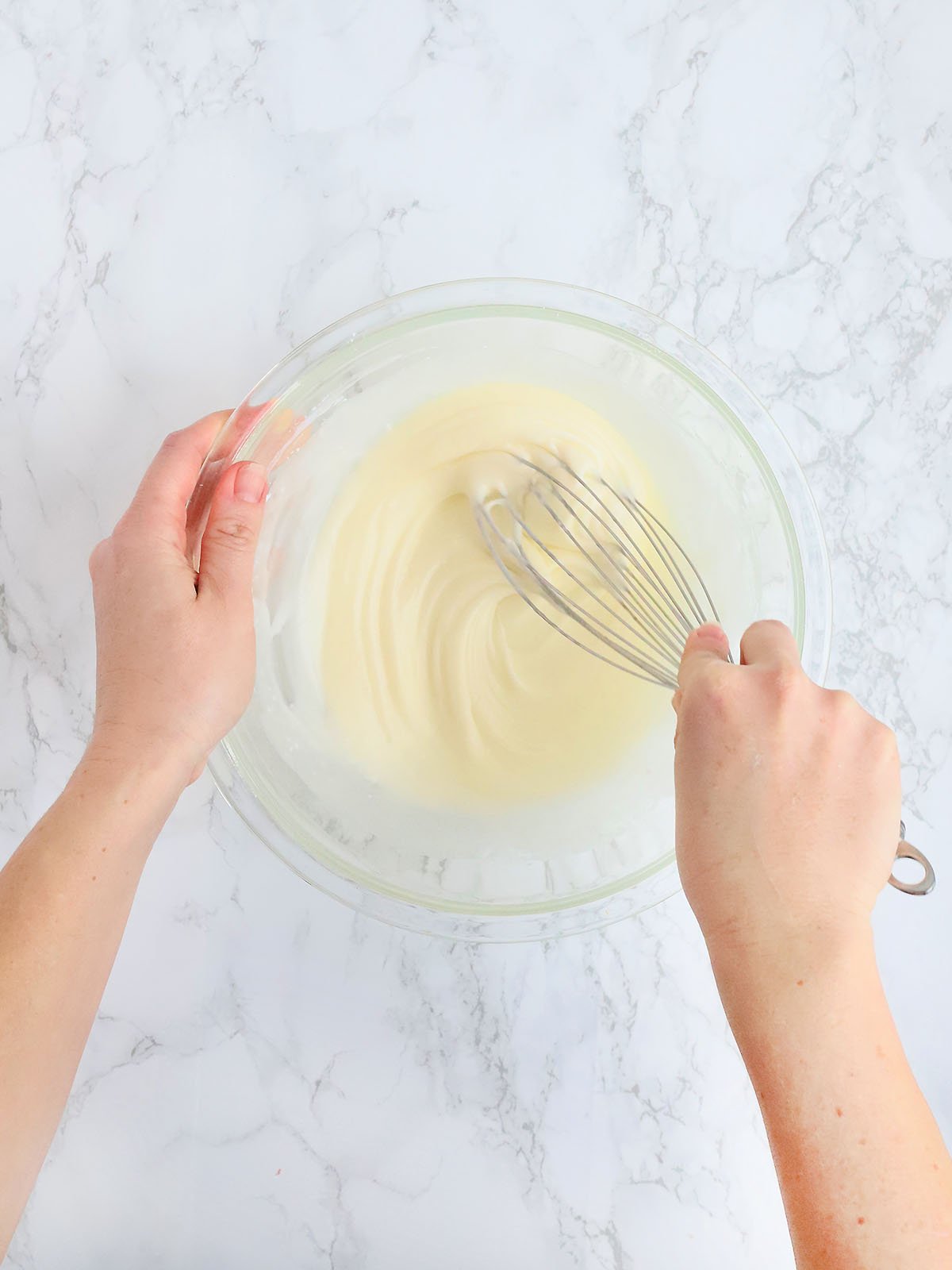
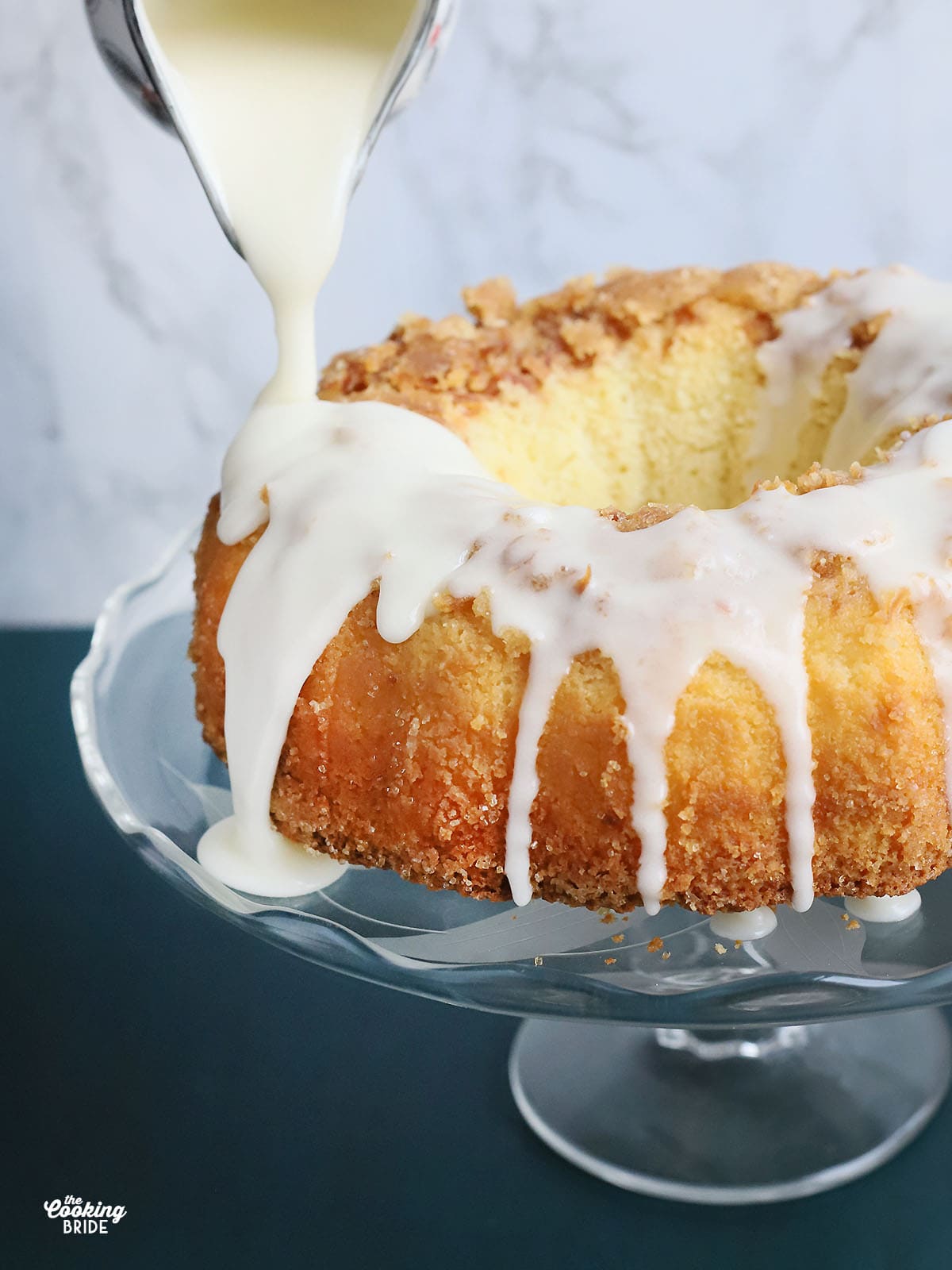
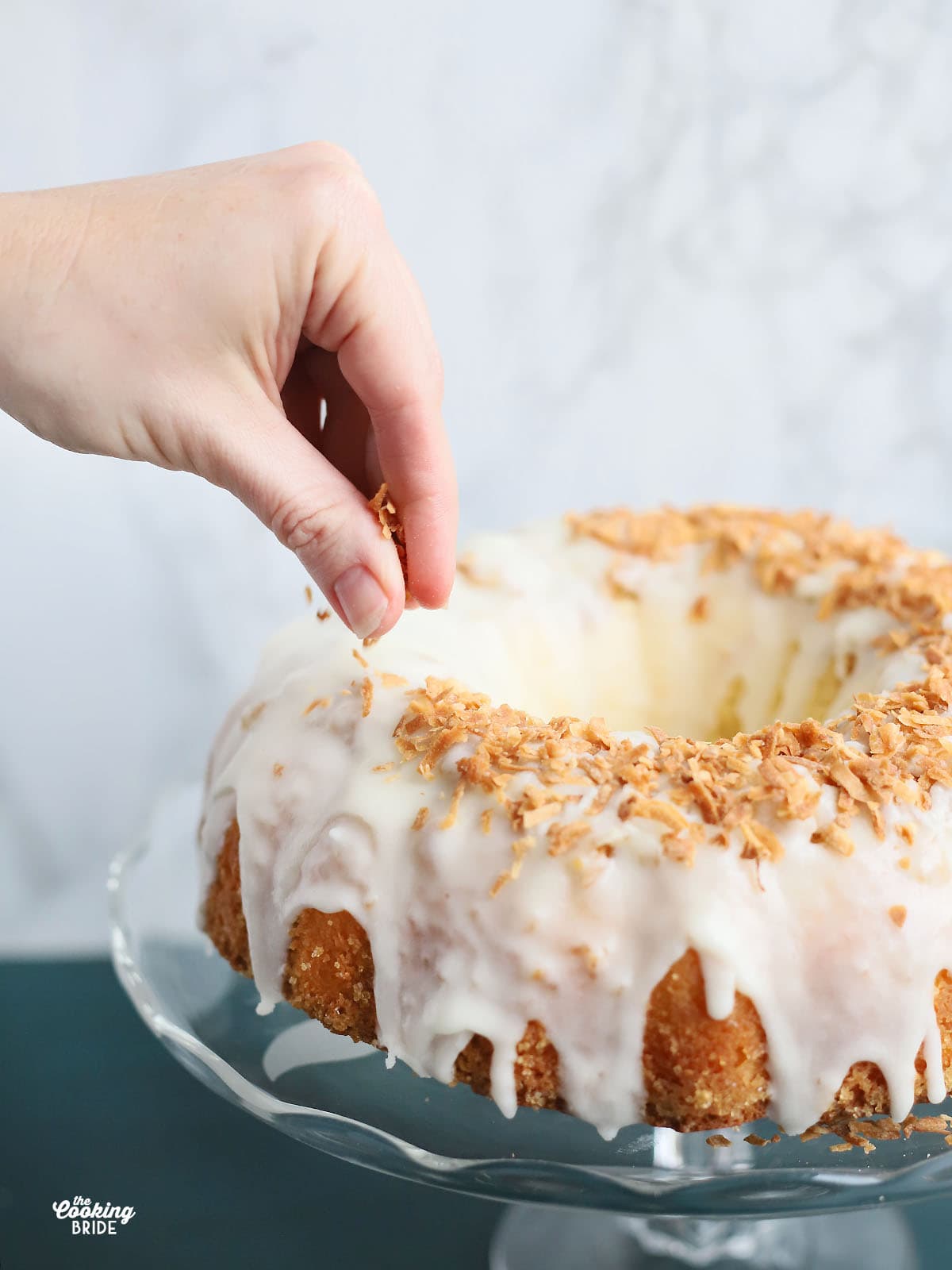

Storage and Freezing
Storage. Louisiana Crunch Cake should be stored in an airtight container, such as a cake saver. It can be stored at room temperature for 2-3 days. Any longer than that and it should be placed in the refrigerator to prevent mold.
Freezing. Wrap an unglazed cake in plastic wrap, then aluminum foil. Use within three months. Thaw before glazing. To freeze a glazed cake, place the cake on a level surface in the freezer. Once the cake has frozen, wrap the cake in plastic wrap and aluminum foil. Then return the cake to the freezer and use within three months. When thawing, remove the layers of foil and plastic wrap while the cake is still frozen. Then allow the cake to thaw completely before serving.
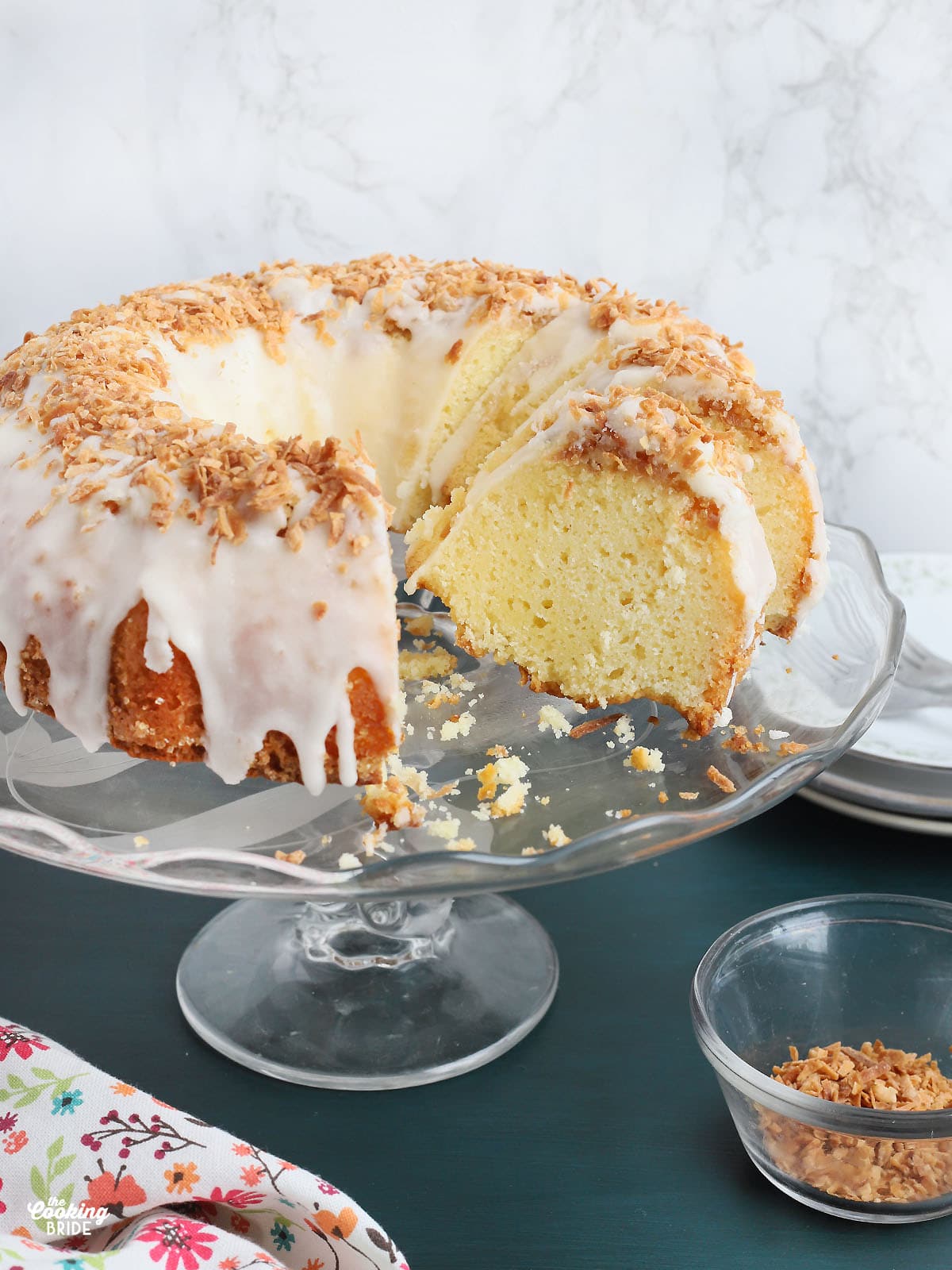
You Might Also Like:

Louisiana Crunch Cake
Ingredients
For the cake:
- ½ cup sweetened flaked coconut
- 3 cups cake flour
- 2 teaspoons baking powder
- 1 teaspoon salt
- 1 ½ cups butter softened
- 2 cups granulated sugar
- 4 large eggs
- ¼ cup sour cream
- 1 ½ teaspoons vanilla extract
- 1 cup buttermilk
- ¼ cup raw sugar
For the glaze:
- 1 ½ cups powdered sugar
- 4 tablespoons melted butter
- 3-4 tablespoons milk
- 1 teaspoon vanilla extract
Instructions
For the coconut:
- Preheat the oven to 350°F.
- Spread the coconut in an even layer on a baking sheet.
- Bake for 8-10 minutes, stirring every two minutes, until coconut is a golden brown color. Remove the coconut from the oven and set aside to cool.
For the cake:
- Preheat the oven to 325°F.
- In a medium bowl, sift together flour, baking powder, and salt.
- In a large bowl, beat butter and sugar with an electric mixer until light and fluffy.
- Add the eggs, one at a time, beating well after each addition.
- Add the sour cream and vanilla. Beat again to combine.
- With the mixer on low, alternately add ⅓ of the flour mixture and ⅓ cup of the buttermilk. Beat just until combined Repeat this two more times, ending with the last ⅓ cup of buttermilk.
- Grease a 10-inch angel food or Bundt cake pan.
- Sprinkle the raw sugar into the greased cake pan, then gently tilt the pan back and forth and side to side to get the sugar to stick to the bottom and the sides of the pan.
- Carefully arrange ½ cup of the toasted coconut over the sugar in an even layer around the bottom of the pan.
- Pour the cake batter over the sugar coconut mixture. Do this carefully so that you don’t disturb the sugar coconut mixture. Gently tap the cake pan on the counter to remove any air bubbles.
- Bake the cake for 60-65 minutes or until a toothpick inserted in the center comes out clean. Remove the cake from the oven and allow the cake to cool in the pan for several hours.
- Gently invert the cake onto a plate.
For the glaze:
- Combine the powdered sugar, melted butter, milk and vanilla extract in a medium mixing bowl.
- Whisk until the glaze is creamy and smooth.
- Microwave the glaze for 30 seconds to one minute. It will seem thin, this is fine. It will harden once it cools.
- Drizzle the glaze over the top of the cake, allowing it to drip down the sides.
- While the glaze is still wet, sprinkle the top of the cake with the remainder of the toasted coconut.
- Allow the glaze to harden for 30 minutes before serving.

